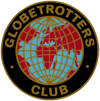The following is an extract from Henry from Hawaii’s website which has lots of interesting links and provides much background to this memorable trip to Molokai. To find out more info, take a look at:
The research vessel Atlantis is a state-of-the-art oceanographic ship, delivered in 1997, which launches the well-known deep diving submersible Alvin. I was invited to join the 14 Nov voyage departing Puntarenas, Costa Rica for an area in the rift zone northeast of the Galapagos Islands. This deep-sea odyssey, configured to retrieve borehole information from both the rift area northeast of the Galapagos and the deep trench area west of central Costa Rica, was essentially to help more precisely determine the subduction mechanisms of plate tectonics. Incidentally, the daily location of the R/V Atlantis (AGOR-25) can be viewed online along with its recent track.
I flew from Chicago, via Mexico City, arriving very early in the morning and stayed at the Posada Aeropuerto near the airport for a relatively few hours until I started exploring the Poas volcanic area and later in the day driving to the capital, San Jose, for an overnight stay. The next day was spent visiting the city sights such as the National Museum and the evening was given to travelling some sixty miles west to Puntarenas. As usual, the wet season afternoon showers were heavy but nothing large enough to impede any plans. Incidentally, the wet or green season as they like to call it there, ends just about mid-November and the rest of the time the weather was excellent.
In Puntarenas, I stayed at the recommended Hotel Tioga with a good view of the beach looking south to the sea. It was a much welcomed stay and very quiet compared to the constant noise of San Jose. I even enjoyed all two stations on the local television scene and the big and inclusive breakfast. At first light from my balcony, I could see the m/v Atlantis riding at anchor almost due south of the hotel.
Puntarenas is both a fishing port and a resort centre on the west central coast of Costa Rica. It is situated on a four-mile-long spit that extends east-west from the narrow waist of Costa Rica. Its tourist activities consist primarily of water-related attractions; however, excursions to the cloud forest at Monteverde and to San Jose, for example, may be accomplished as day trips. This is not the case for the volcanic areas of Arenal Volcano, Poas Volcano and Irazu Volcano inasmuch as the distances to these areas generally are too great when starting from Puntarenas.
I caught a water taxi to the Atlantis and was introduced to the ship by its most hospitable captain, George Silva. The research vessel is a remarkable self-contained workshop of the deep with a most competent staff of high-calibre people. Later in the day the scientist in charge, Dr Keir Becker of the University of Miami, embarked with his group of sea-going scientists. It was a most impressive group.
The first two days at sea were involved in heading almost due south some 600 miles to the first dive site at 1*14’N/83*44’W. The next day was taken up with Alvin diving to 11,500ft to two boreholes to retrieve information pertaining to physical conditions within the wells. In addition, sampling was made of the water content for evidence of bacteria that have been residing in the deep areas beneath the floor of the ocean. NASA apparently is interested in these results as they will also be attempting to retrieve evidence of bacteria that might have resided on such remote areas as Mars.
The following two days were spent travelling north northwest to a second dive site at 9*39’N/86*11’W where Alvin was sent down 14,000ft or almost three miles to retrieve data from the deep trench that parallels the western coasts of both North and South America. On the outside of Alvin, we attached a bag of Styrofoam cups with various messages and logos only to see them shrink to inch-high thimble-sized curiosities due to the huge pressure exerted at those depths.
The last leg of the voyage covered approximately 100 miles as we headed east around the Nicoya Peninsula back to Puntarenas. Incidentally, during the cruise we saw dolphins. turtles and pilot whales. Overall, it was a most successful and enjoyable voyage.
The fifty-mile drive from Puntarenas to the San Jose international airport took two hours on the narrow two-lane Pan American Highway and, after another overnight at the Posada Aeropuerto, an early flight to Chicago completed this portion of the trip. The flight track brought us over Guatemala City and the view to the west at the string of coastal volcanoes, some of them smoking, was marvellous. Lake Atitlan was clearly visible in the early morning and I took an awful lot of pictures. Even smoking Popocatepetl (18,000ft) and snow-covered Ixtacihuatl near Mexico City presented calendar-quality photo opportunities.
The entire trip was rewarding and I would hope to accompany the Atlantis on some future research voyage.
If you would like any further information, please contact Henry by email: Nowicki@webtv.net
Discusss this article in our new forum
